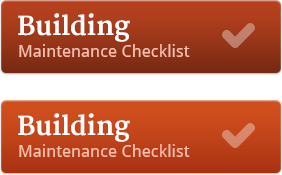 There’s no question that warm weather brings people outside in droves, but sometimes we’re forced inside long before the evening turns cool because it gets too dark out to enjoy ourselves. Exterior lighting is the obvious solution to this problem.
There’s no question that warm weather brings people outside in droves, but sometimes we’re forced inside long before the evening turns cool because it gets too dark out to enjoy ourselves. Exterior lighting is the obvious solution to this problem.
While most properties have some form of exterior lighting, they aren’t always in working order or located in the optimum positions. Spring is a great time to give your exterior lights a check-up and make sure they’re ready to go for the long summer nights ahead.
Exterior Lights Promote Safety and Enjoyment
There are two main reasons we have outside lighting: safety and to extend our time outside. Lighting is very important in parking lots and along walkways from the drive or sidewalk to the house. It helps emergency vehicles see the house number and helps owners fit their key in the door. A well-lit location also has a far lower chance of becoming a target for crime than a poorly lit location. Effective exterior lighting also extends the amount of time we can spend outside enjoying the air and the company of friends and family.
Exterior Lighting Maintenance
Here are some spring maintenance tips you can follow to get the most out of your exterior lighting.
- Replace bulbs. This is the easy one and the most obvious problem with lighting, but a lot of property owners put it off during the winter. They may notice the light bulb has burnt out, but decide it doesn’t need to be replaced right away since they aren’t outside much after dark anyway. Once spring arrives, though, those burnt out bulbs become a much higher priority. When replacing your bulbs, consider switching to a higher efficiency bulb to get more life out of it. Businesses that must light up parking lots, in particular, can enjoy substantial savings by switching to higher efficiency bulbs. Photocells are another option in lighting that can pay off for businesses in the long run. These light turn on automatically at dusk and turn off at dawn with no manual adjusting needed. Be sure to check the wattage of your light bulbs and make sure they are bright enough to give you the light you want or need but not too high for the socket to handle. The last thing you want to do is blow a fuse or circuit simply by replacing a bulb!
- Adjust Your Timers. If you have your outside lights on timers, make sure you adjust them to come on later every month or so as the days get longer (and then adjust it down again as summer fades). If you leave the timers set to come on and turn off at the same time all year, you’re wasting money. It gets dark far earlier in January than it does in June. You can save several hours of lighting expenses by adjusting your timers to turn on at dusk and off at dawn. A simple check of the local news will tell you what time the sun rises and sets each day. You don’t need to adjust the timers every day, once a month is fine.
- Check Your Light Covers. Most light bulbs are protected by some sort of cover. It’s important to check these covers to make sure they are clear of cobwebs and debris that might block the light. You can clean the glass to help the light shine brighter and check to make sure the light cover is still tightly connected to the building. Over time, it may have worked itself loose or pulled away from the building leaving a gap between the house and the light and possibly an entry point for pests.
- Add Lighting. Maybe you’re not happy with the amount of light you have outside. Summer is the perfect time to add lights. You’ll know exactly where you’re spending time and which areas need to be lit up more. Solar or wired path lights can be added around the deck, patio, walkways or yard or you can install motion sensor lights in dark corners of the property.
Fixing exterior lighting problems is a simple way to help you enjoy the outdoors more and keep your property safer at the same time. With your exterior lighting in shape, all you have to worry about are the mosquitos!



